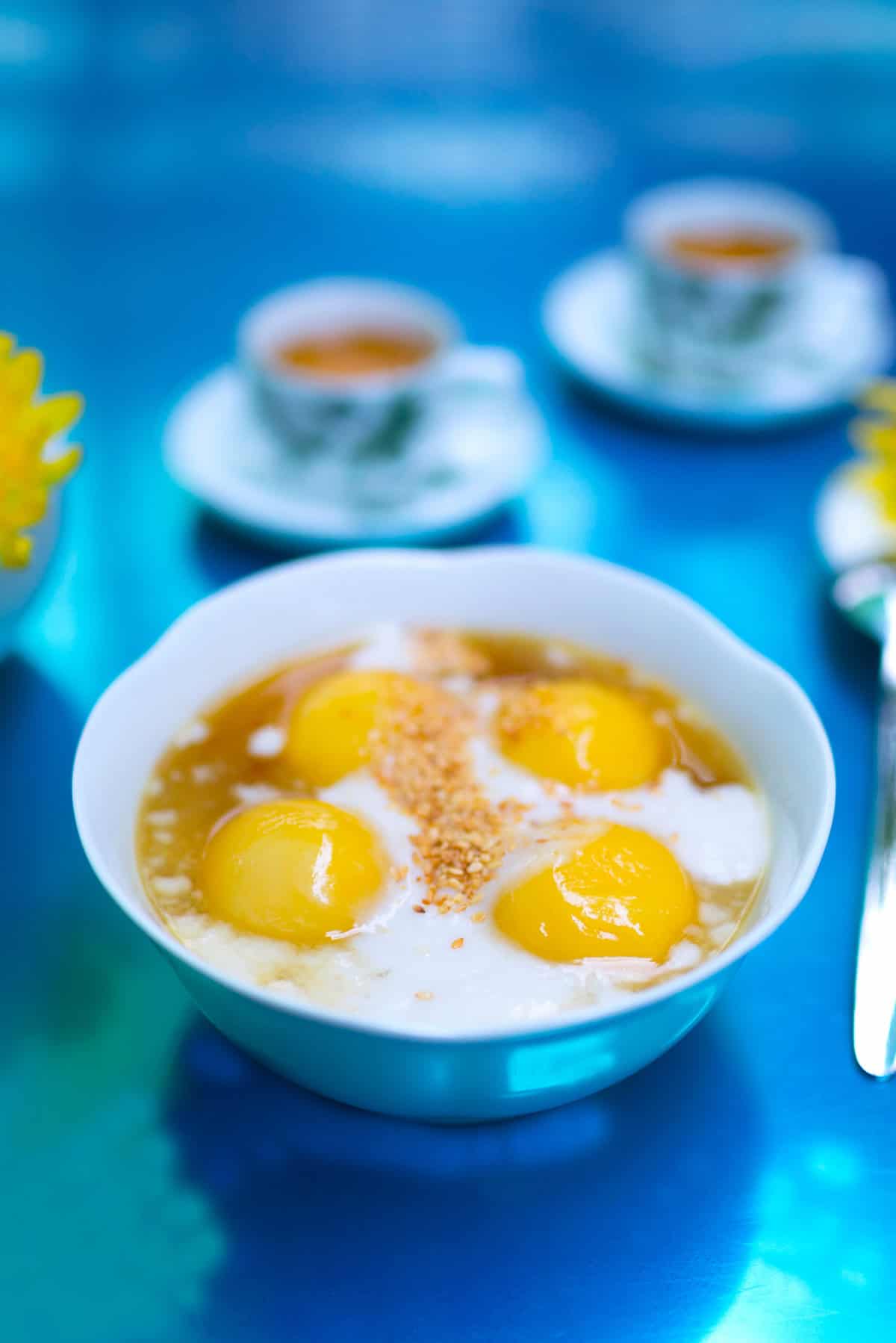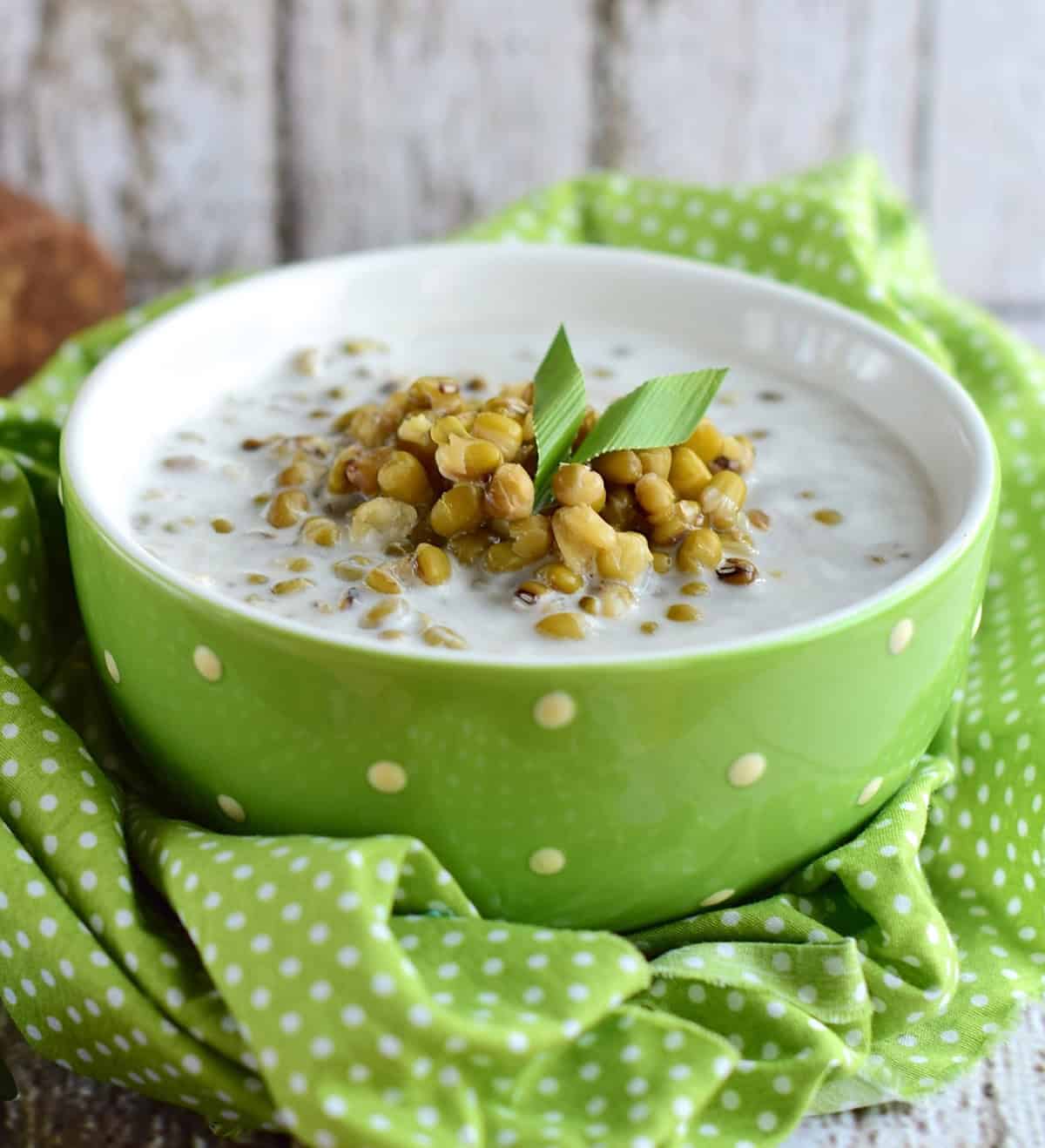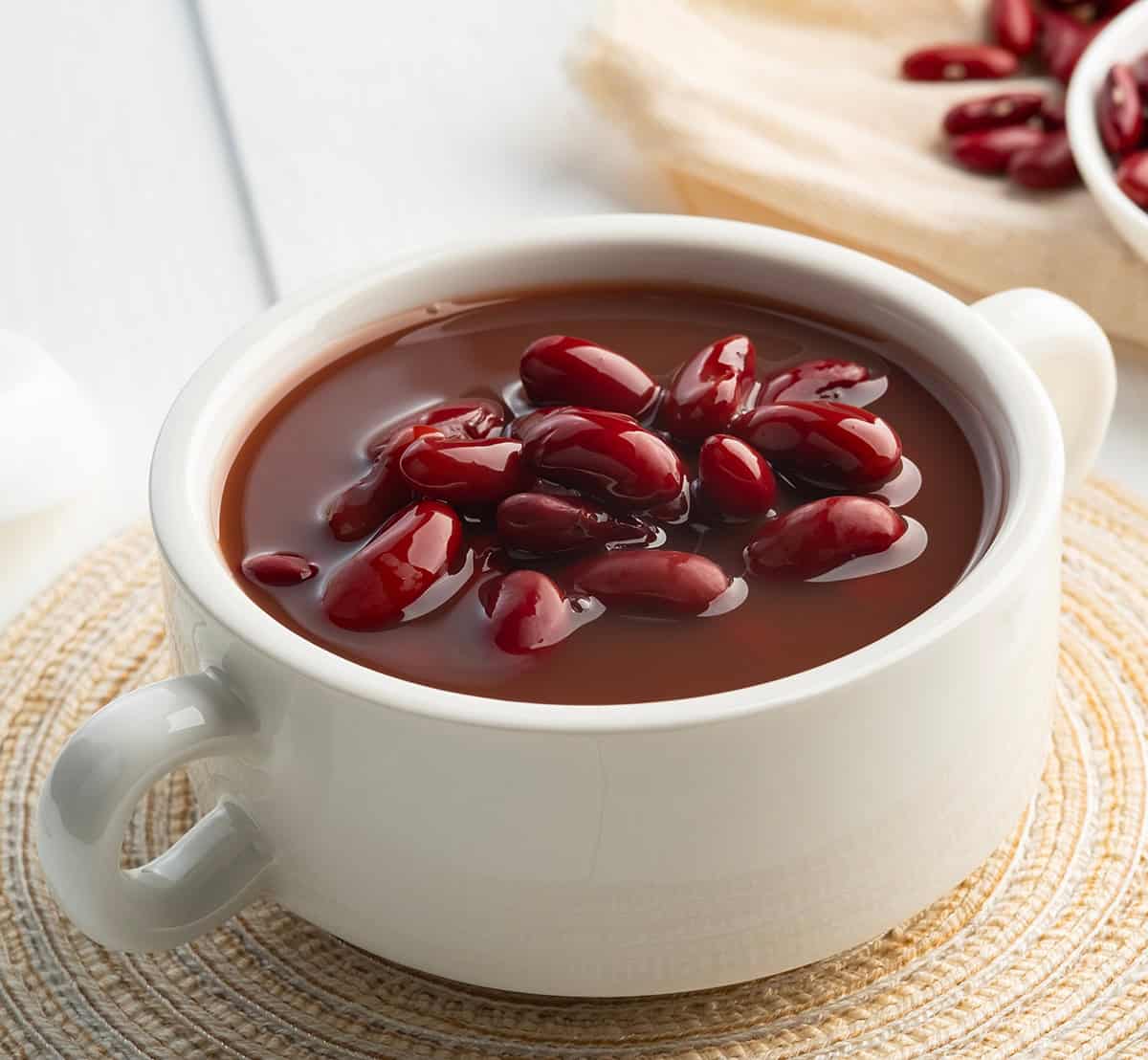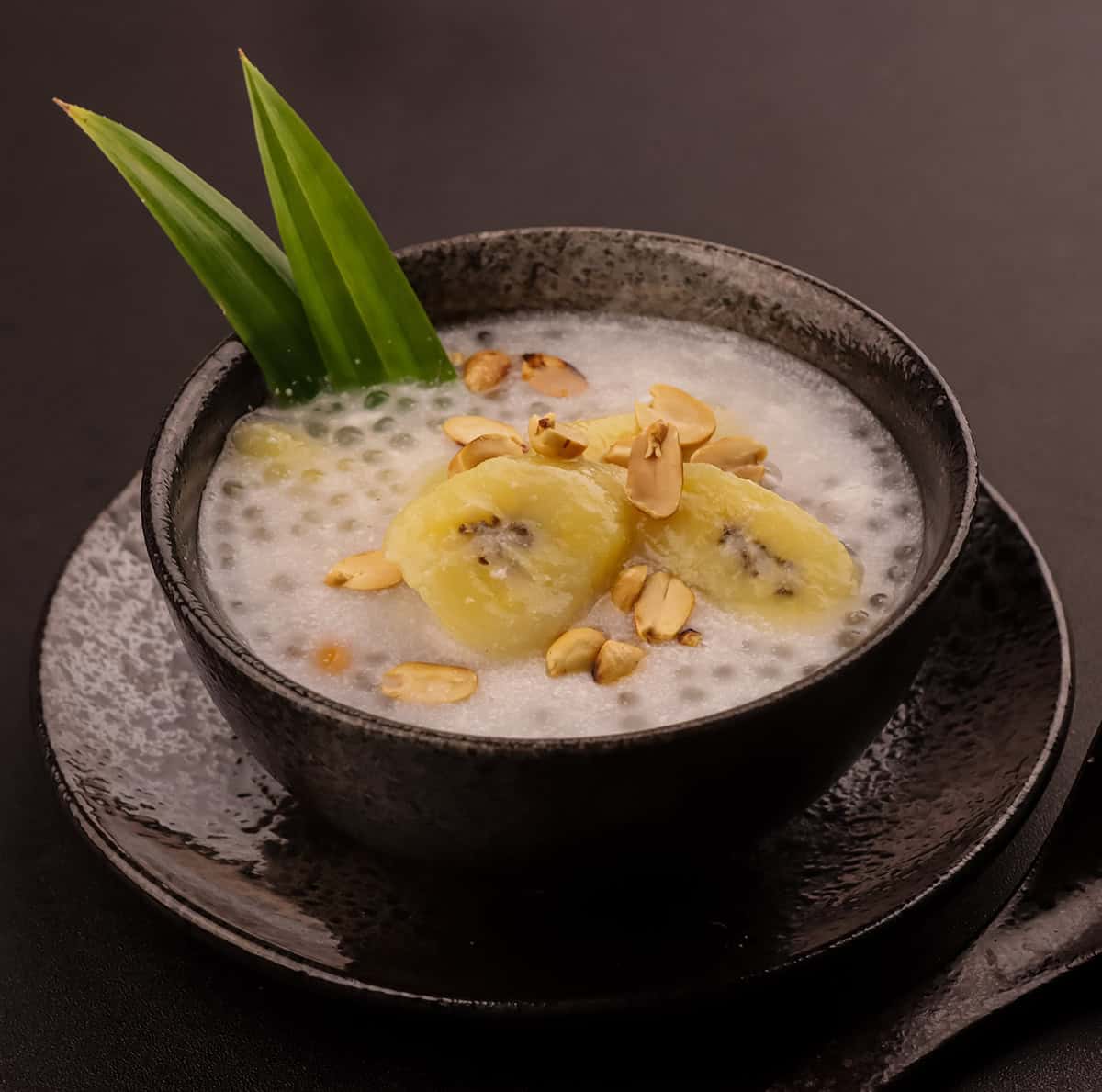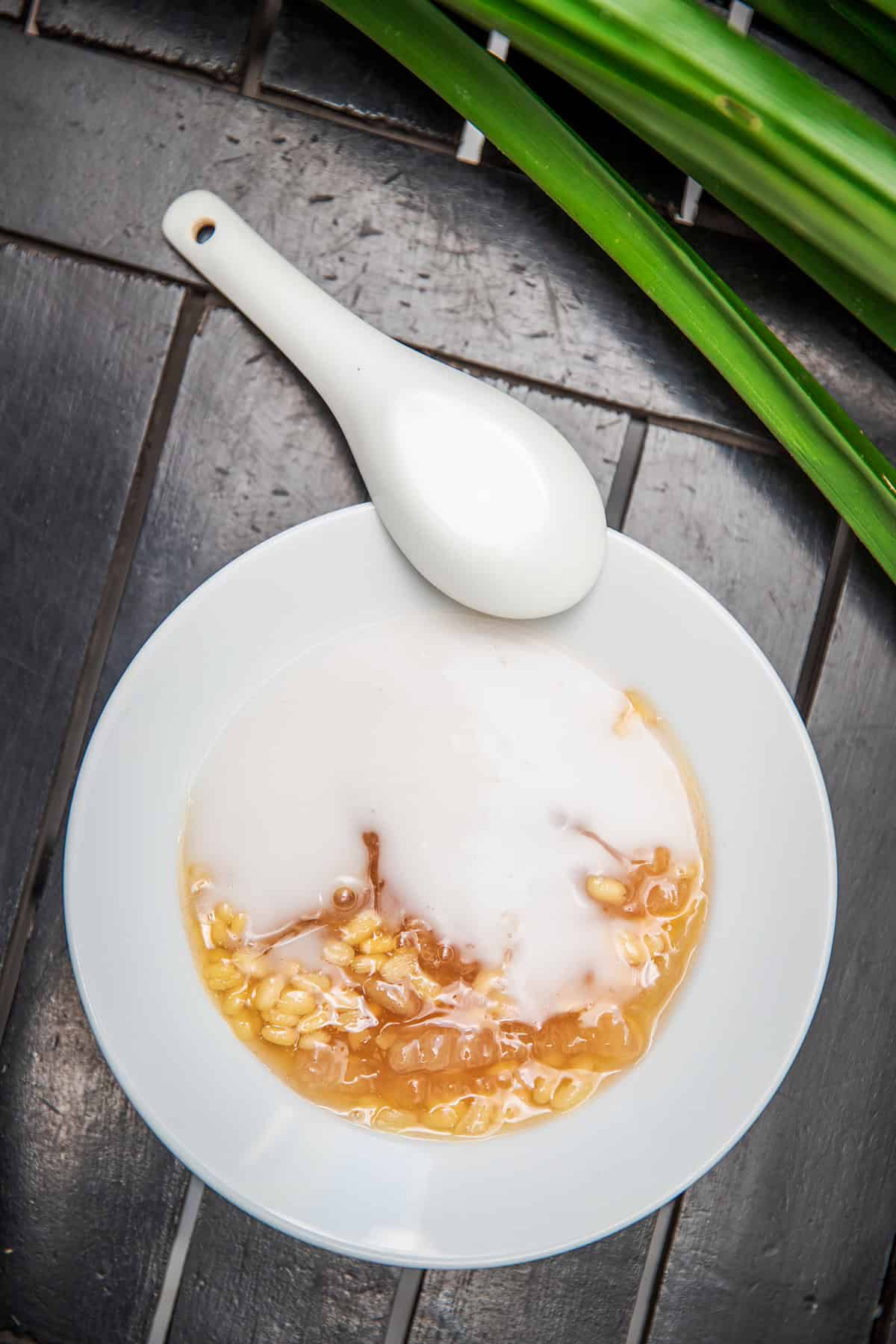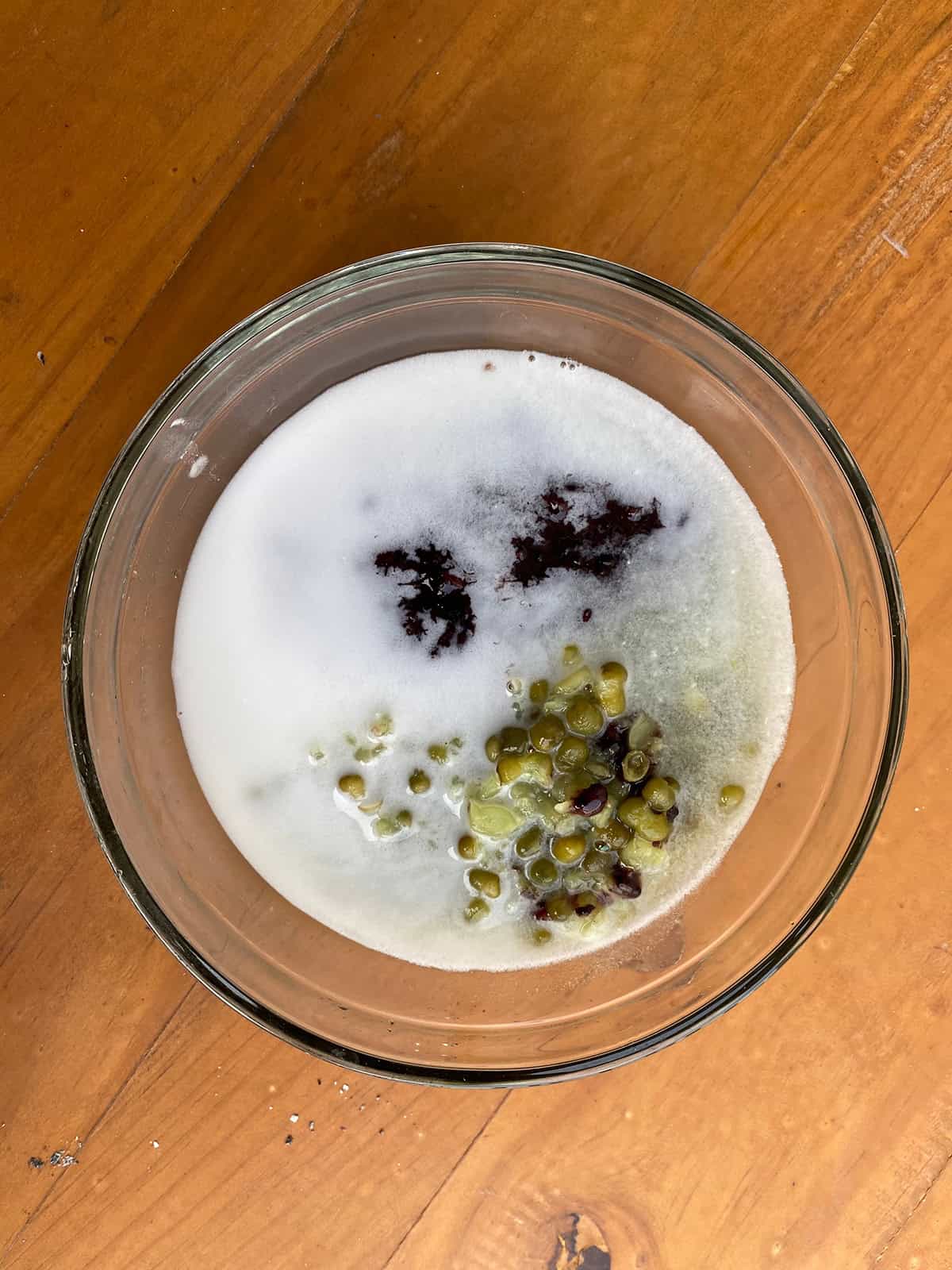Looking for a dessert that’s packed with tradition and flavor? Chè Trôi Nước, made with glutinous rice dumplings filled with mung bean, is served in a warm ginger syrup that makes it both comforting and unique. Discover how to make this Vietnamese dessert and enjoy a treat that balances sweetness with a hint of spice.
Ingredients
- Glutinous Rice Flour: 0.3 pounds
- Mung Bean Paste: Filling made of mashed mung beans and a touch of sugar
- Pandan Leaf Juice / Beetroot Juice / Water: 3.5 tablespoons for coloring
- Palm Sugar: Sweetener for the syrup
- Ginger: Adds aroma and warmth
- Pandan Leaves: Optional additional flavor
- Coconut Milk: Optional topping for richness
- Sesame Seeds: Toasted for garnish
Instructions
- Make the Dough:
- Mix glutinous rice flour with warm water.
- Add pandan, beetroot juice, or water for color until dough forms.
- Prepare the Filling:
- Mash cooked mung beans with sugar to form a paste.
- Shape into small balls as filling.
- Assemble Balls:
- Encase mung bean paste with dough.
- Shape into smooth balls.
- Cook the Rice Balls:
- Boil water. Add rice balls. Cook until they float.
- Transfer to cold water.
- Prepare Syrup:
- Boil water with palm sugar and ginger until dissolved.
- Add pandan leaves if desired.
- Combine and Serve:
- Add cooked balls into the syrup.
- Drizzle with coconut milk.
- Sprinkle sesame seeds on top.
Tasting Notes
The dessert offers a harmonious blend of textures and flavors. The glutinous rice balls are soft and chewy. Inside, the mung bean filling is subtly sweet. The ginger syrup brings warmth and sweetness to every bite. The coconut milk adds a creamy touch, while toasted sesame seeds provide a nutty contrast. The result is a rich, comforting dessert.
Similar Dessert
Similar in essence to Chè Trôi Nước are Japanese mochi and Chinese tangyuan. Mochi uses glutinous rice for a chewy texture without the syrup. Tangyuan sometimes features sweet or savory fillings, served in a simple ginger or fermented rice broth. Indian gulab jamun, though not rice-based, shares similar syrup-soaked sweetness and texture.
History
Chè Trôi Nước has roots in Vietnamese tradition and culture. It is often associated with Tết Nguyên Tiêu, the first full moon festival of the lunar year. The round shape symbolizes unity and completeness. The dessert is a favorite among Vietnamese families for celebrations, offering warmth and sweetness in gatherings.
Quick Pro Tips
- Consistency Tip: Test the dough by rolling a small piece. It should be smooth and pliable.
- Filling Tip: Ensure mung bean paste is firm. This helps it hold shape in the dough.
- Flavor Tip: Add extra ginger or pandan for a more aromatic experience.
- Serving Tip: Serve warm to enhance the flavors.
